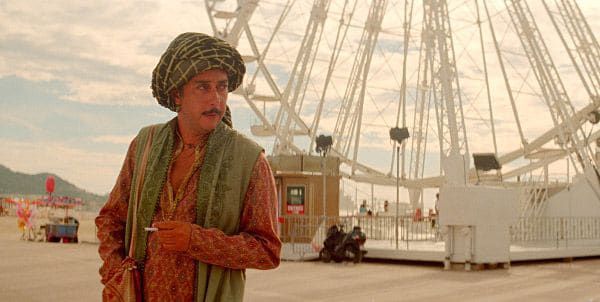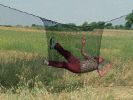Eye For Film >> Movies >> Arabian Nights: Volume 3 - The Enchanted One (2015) Film Review
Arabian Nights: Volume 3 - The Enchanted One
Reviewed by: Jennie Kermode

The third part of Miguel Gomes' trilogy, which tells the story of the Portuguese economic crisis in the style of the 1,001 Nights, this film holds the unusual dual distinction of being both the most accessible and the strongest of the set. It takes us back to the roots of the thing and spends a considerable amount of its running time on tales of Scheherazade herself. Slipping through time and space as if they weren't there, she is a being shaped by her relationships with others - her father, an admirer, a prospective lover, and the king who may yet kill her - but it is her own wisdom which allows her to draw on her experiences and create the stories which, in turn, shape all of them. Through this, Gomes' tale is focused on storytelling itself and on what it means to be a storyteller. It's an admission of power, a laying of cards upon the table, an invitation to participate. How can the stories a troubled country tells about itself define both its present and its future?
Ably played by Crista Alfaiate, Scheherazade - or Xerazade in the Portuguese rendering - is central yet distant from her own story, and the only major female character in the whole film, her legend given humanity in a story that makes myths out of men - she is fleshed out as they are reduced. in her presence, the celebrated Paddleman (Carloto Cotta), situated as a hero for his fathering of many children, finds himself reinterpreted as a mere love interest, warned that his looks will soon fade and he'll have nothing left to offer. At the centre of their own narratives, the men are prisoners in her stories, like caged birds.

The birds - make chaffinches - are the film's other major story element, captured by present day men who learned the secret of their songs during wartime. Caged and encouraged to learn new songs, they are then presented in competitions. This small, obsessive hobby community is depicted with affection but with sufficient coolness to leave questions of ethics wide open. We hear of a man fainting when his prize chaffinch was tested in a close contest; another falls down sobbing at the sight of a dead bird. In a surreal episode, Gomes invites us to consider the parallel fates of chaffinches, genii and men. If the economic crisis has stripped away layers of civilisation, as we have seen in the previous films, can we now perceive civilisation in new ways? is this an opportunity to develop fresh narratives that better suit who we are now, or do we remain prisoners of tales that began hundreds of years before we were born? What effort of will, what fearlessness, is required to become a storyteller?
Viewers who fell in love with Lucky the dog in the second film will be pleased to see him make another appearance here, but he's not a major part of focus, more of a link between the civilised world ad the world of nature. As birdsong fills the air, some of it learned from CD recordings, we see nature itself as a collection of stories passed along for an eternity and now increasingly dominated by human ideas. Gomes uses cinematographic tricks to trick us into thinking we are simply observing what has been carefully shaped. After two films spent stressing the vast impact of the economic crash, he now reveals it in its smallness, the consequence of one set of ideas among many. The cycle of days and nights continues. As the sun rises, Scheherazade falls silent.
Reviewed on: 06 May 2016

















